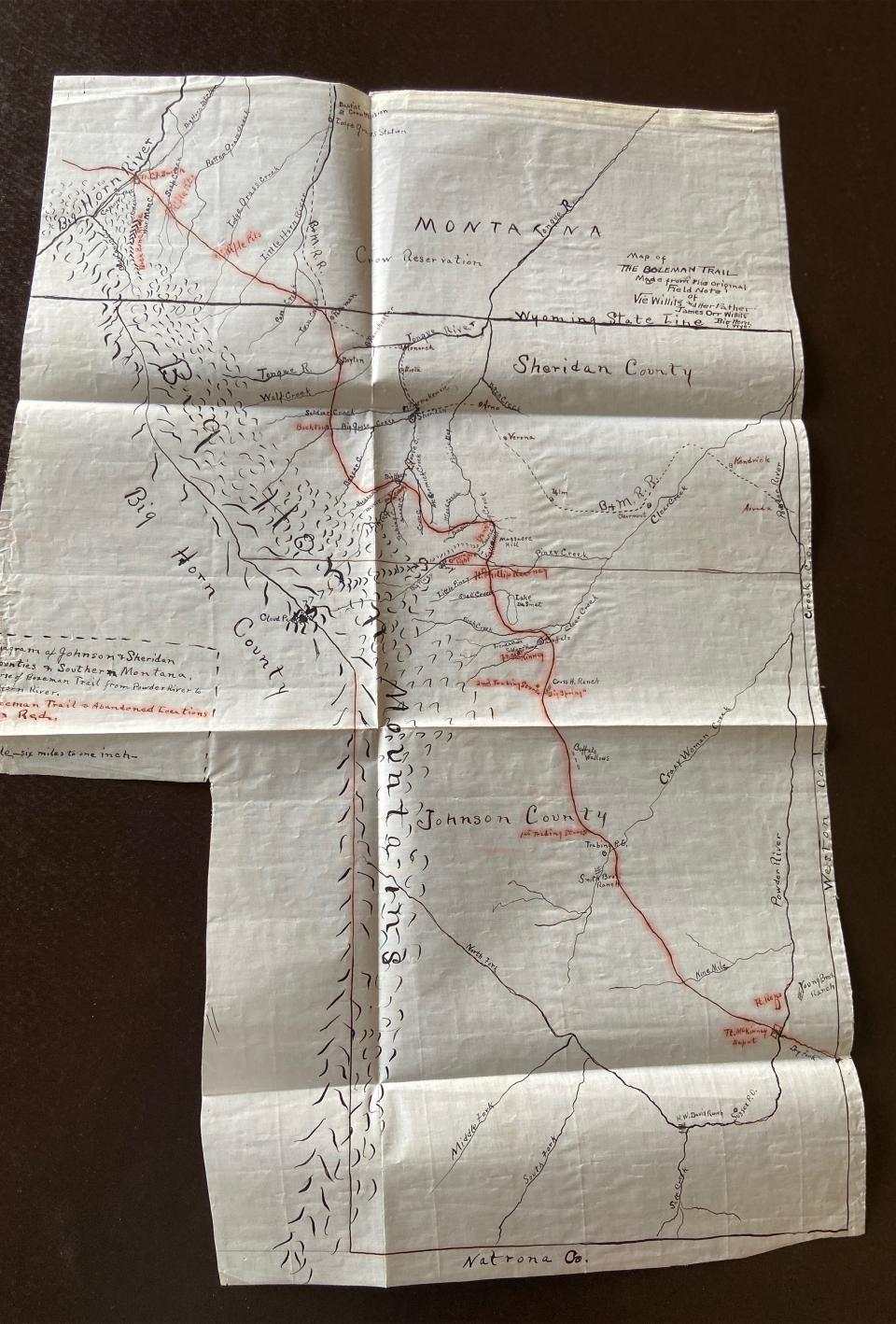- Home
- Encyclopedia
- Vie Willits Garber: Botanist, Historian and Tea...
Vie Willits Garber: Botanist, Historian and Teacher
Few Wyoming women surpassed Vie Willits Garber for balancing intellectual achievement with motherhood—not to mention becoming a ranch matriarch. Relentlessly curious, she blazed new trails in Wyoming botany scholarship and historical research. Yet Vie preferred riding a horse to driving a car. She also raised three rambunctious sons and prepared meals for haying crews on a wood-fired stove.
Her drive probably came from her father, James Orr Willits. He left a comfortable existence in Illinois to homestead in Wyoming, taking the train west and buying supplies in Cheyenne. On April 22, 1881, he mounted up and headed north. He rode, “a hansom [sic] sorrel, young yet well broke, kind, and an excellent traveler.”
Willits’s goal: locating a homestead large enough to raise cattle. Age 35 at the time, Willits rode nearly 400 miles in three weeks, writing to his wife every Sunday.
Image
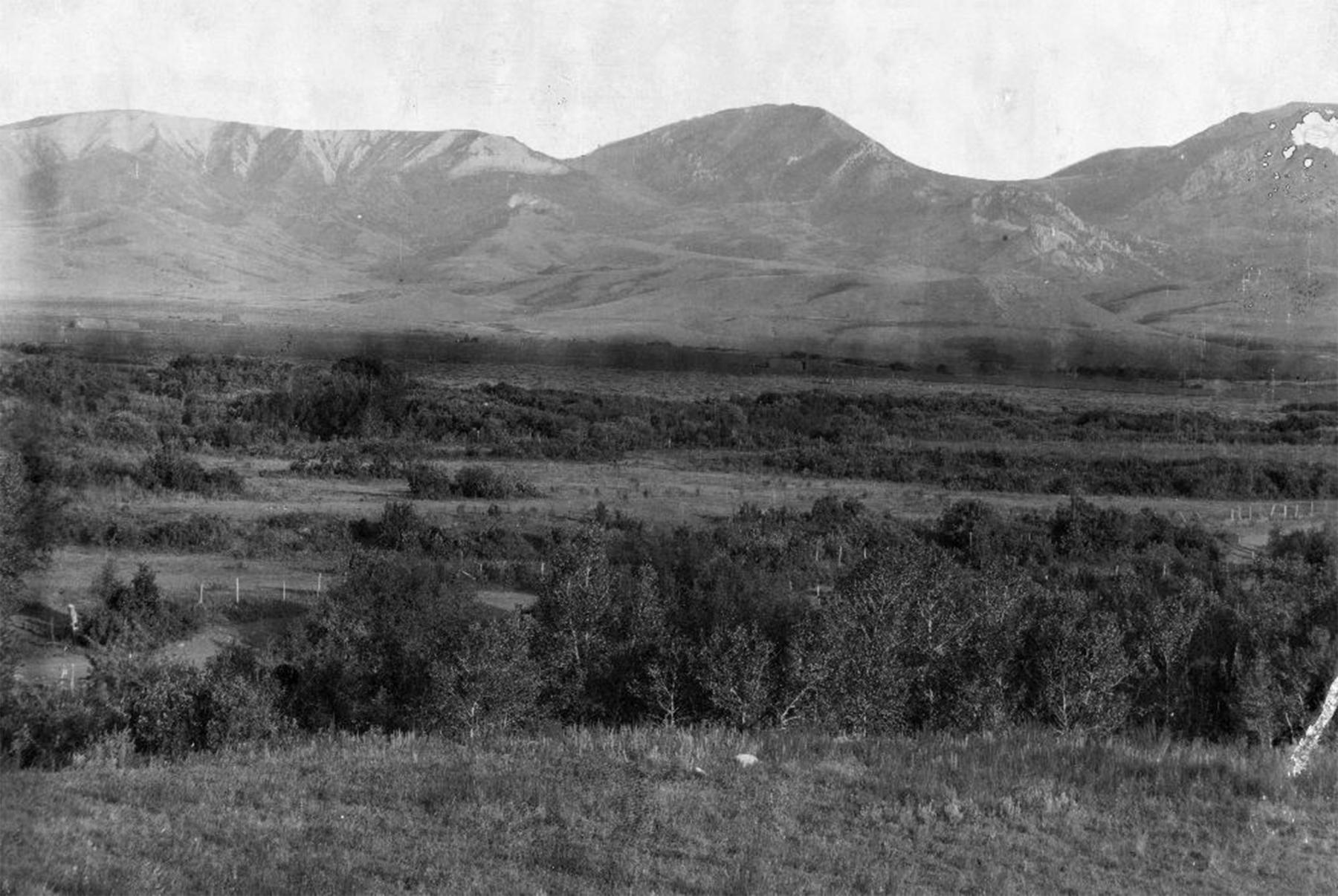
The Little Goose Valley
In the second week of May, he found his land: a 160-acre parcel located in the lush—by Wyoming standards—Little Goose Valley at the foot of the Bighorn Mountains in what’s now Sheridan County. He left but was back in a matter of months with his wife Hattie and two children.
They built the first two-story house in the Little Goose Valley, just west of Big Horn City. The couple had two more children, Aureli and, in 1884, Vie.
Despite tough years, including the bitter winter of 1886-87 and the dire Panic of 1893, the Willits family prospered. They bought more land, raised draft horses, sheep and a small herd of cattle.
Sorrow attended them as well. Aureli died in 1893 of scarlet fever. Vie escaped the infection. Instead, by any metric, she thrived. Under the guidance of an ambitious father who adored her and a mother with a master’s degree in English literature, Vie blossomed into a curious, disciplined soul with a passion for history and botany.
School in Laramie
At age 17, Vie sought admission to the University of Wyoming’s preparatory school. This institution, founded in 1887, was for the “benefit of students from counties not provided with complete high school courses,” according to a turn of the century university catalog.
The program was perceived, she later told a Sheridan Press reporter, as being “very aristocratic.” New students had to apply and meet certain qualifications in order to attend. Fortunately, a visiting teacher at the local school in Big Horn took Vie under his wing. “His suggestion was to write to the University of Wyoming preparatory school, saying they will send you a course of study to you and dictate what you are to study. I will simply give you the examinations,” Vie said in an interview.
The plan worked. In 1902, Vie left for Laramie. She graduated from the preparatory school, but not before being the featured essayist for a program on Feb. 13, 1903. Her subject: Shakespeare’s Macbeth.
Image
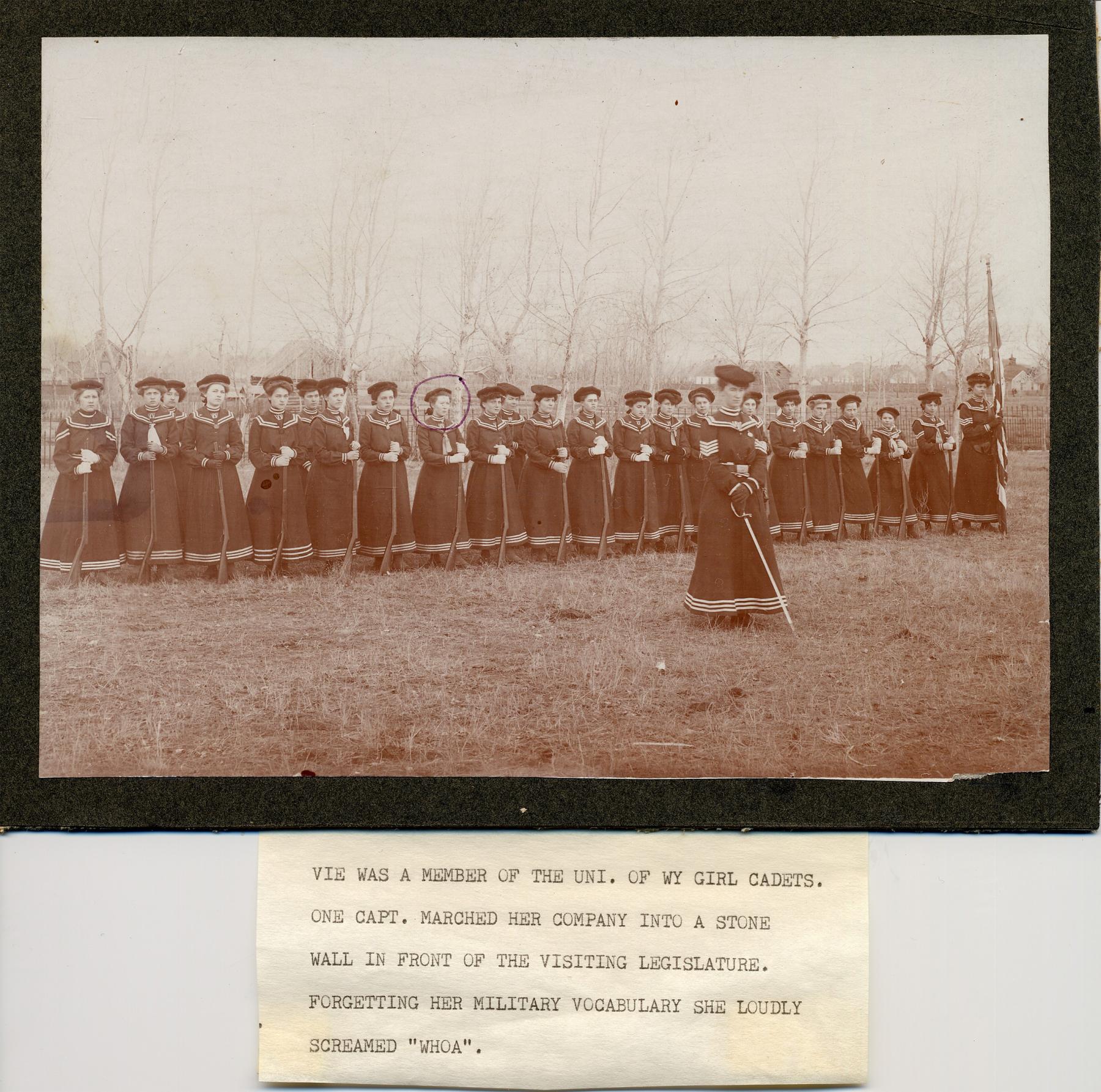
Image
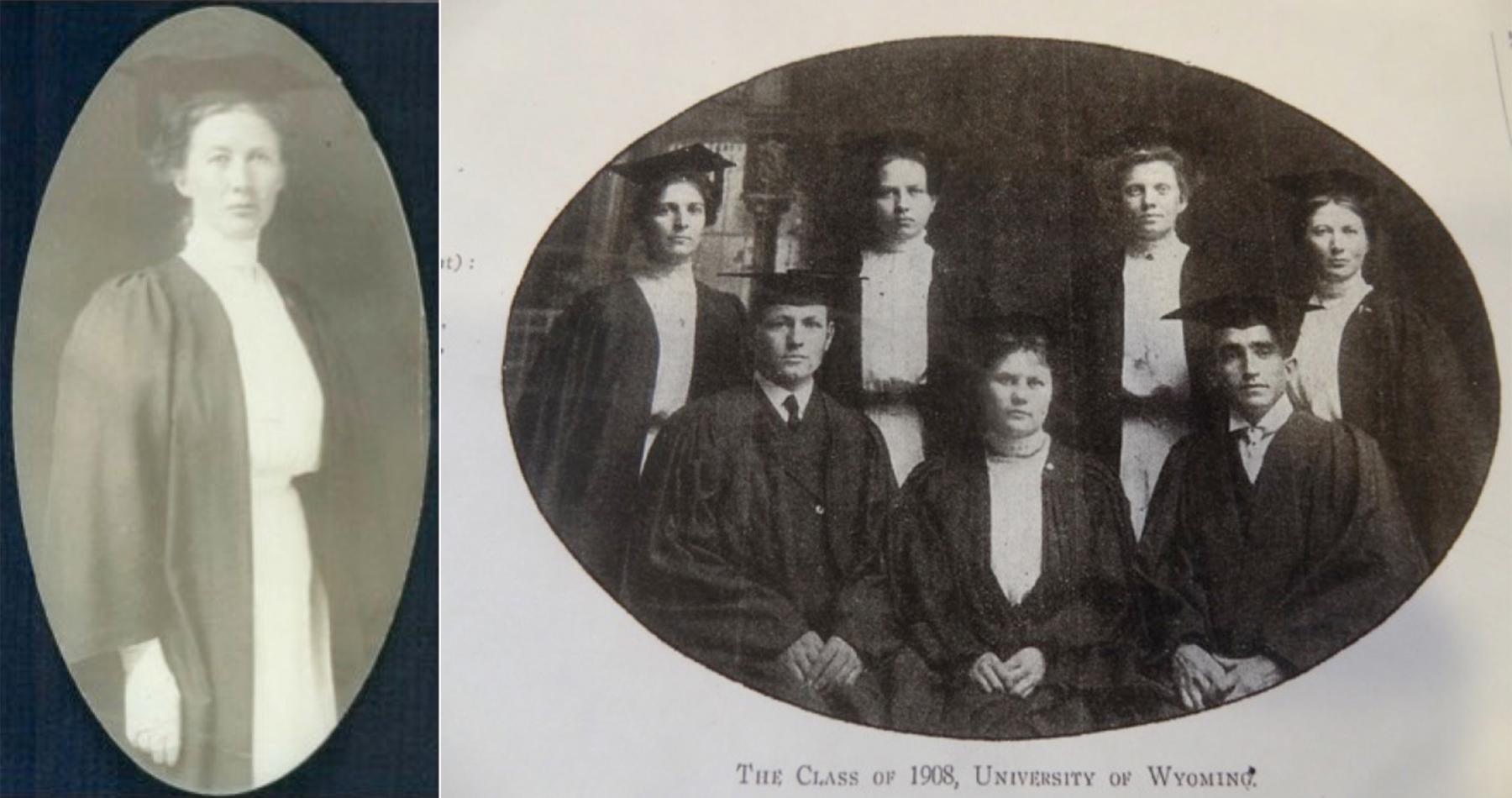
Marriage and family
Higher education didn’t wholly occupy her life. In September 1901, Vie had met former Missourian Alvin LaRoy Garber. She was 17. It was the start of a ten-year courtship. Roy expressed his interest from the very start: “I met him at a birthday party in September. I don’t remember all the circumstances, but he grabbed me and kissed me, and that kiss was one that never washed off,” she said in an interview with one of her relatives. They married in 1910 and had three boys.
Image
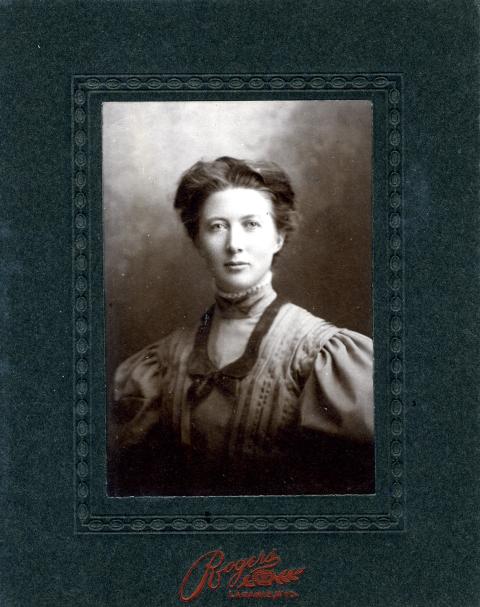
Between the first date and wedding, however, Vie focused on schooling in Laramie. It did not supersede family duties. When her elder sister, Nellie, came down with fatal kidney disease, Vie returned to Big Horn to help the family cope. It took Vie six years to graduate from the University of Wyoming.
Writing
While attending U.W., Vie pursued her interest in historical scholarship. The year she graduated, she won an award from the Jacques Laramie Chapter of the Daughters of the American Revolution for her essay, “Fort Laramie and Its Relations to Pioneer Wyoming.”
When she earned her diploma in 1908, her pen rarely rested. Vie gave the commencement address for her class. She left no doubt about the theme, although it was untitled: Education and classical ideals are fine but don’t forget the practical stuff, the “tasks of life, both high and low,” as she wrote. She could have been writing about herself.
Teaching and scholarship
Vie was 24 years old, the holder of a bachelor’s degree and a first-class teaching certificate (meaning she had taken a full range of classes at UW, from geography to political economy). She began teaching in Sheridan County.
She still had scholarly aspirations, setting her sights on a master’s degree, again from UW. As an undergraduate, she had met Grace Raymond Hebard, the first woman to receive a civil engineering degree from the University of Iowa—and a subsequent Ph.D. in political science from Illinois Wesleyan University. At the University of Wyoming, Hebard was, among other things, professor of political science and history. [She is also probably the only Wyoming woman whose name graced a military vessel: the Grace R. Hebard, a Liberty ship, built in 1943.]
With Hebard, Vie explored an unorthodox path to her master’s degree. She would, in fact, write two theses: one on the Bozeman Trail and one on the botany of the Little Goose Valley.
Letters between Vie and Hebard reveal Vie’s uncertainty in taking on the Bozeman Trail project. “I’ve put a good deal of thought into this,” she wrote Hebard. She proposed a “non-statistical style although [it would be] absolutely authentic. My father made trips on the trail in the early 1880s.” She added, “It has been my purpose to state nothing that cannot be proven.”
Vie had her doubts. “How large the scope of my work?” she wrote Hebard. “Are you willing for me to attempt such a thing?” Hebard was.
Image
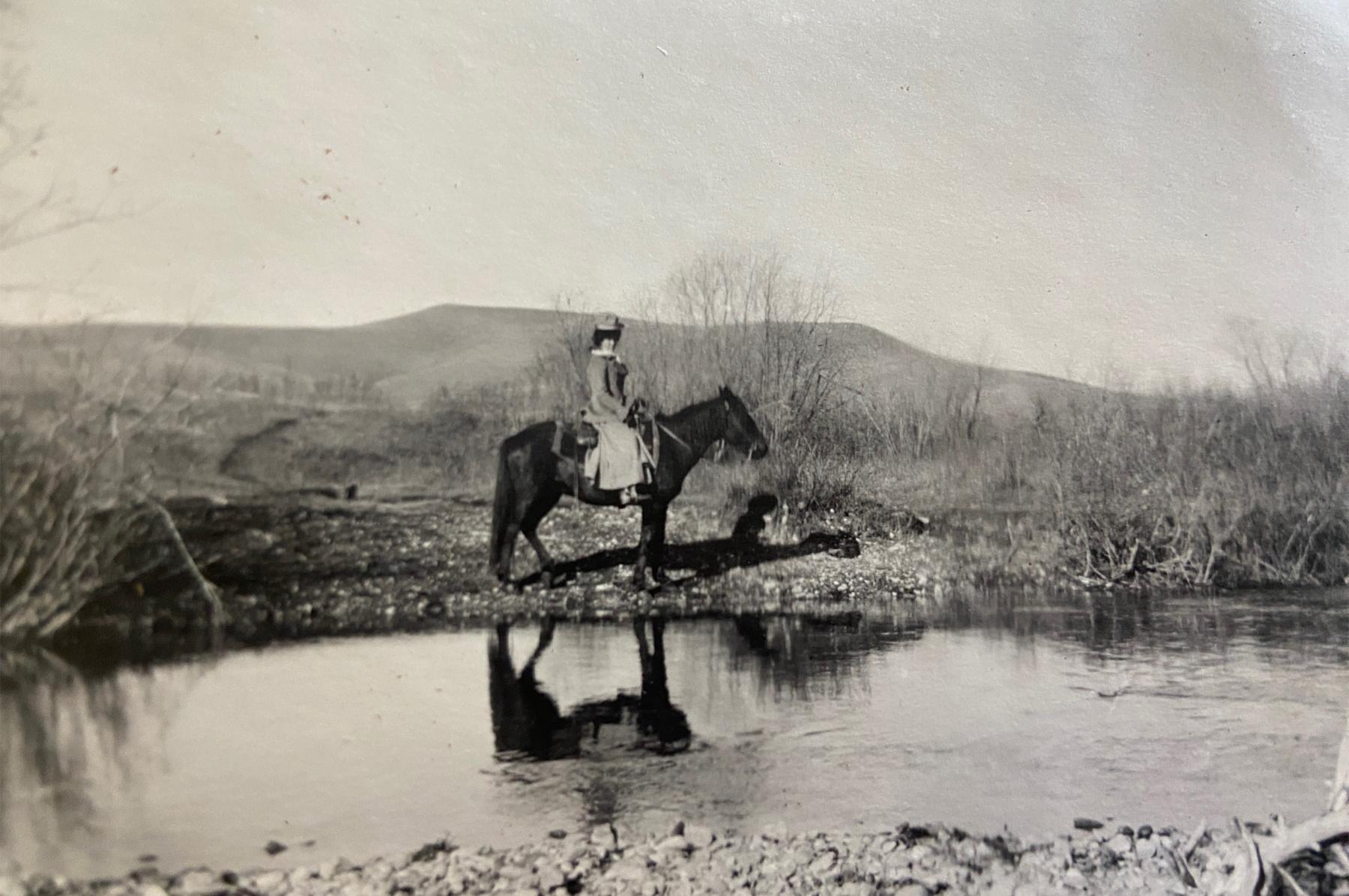
Researching the Bozeman Trail
In the 25-page monograph simply titled The Bozeman Trail, Vie physically followed the white settlers’ and miners’ path from Fort Laramie to Virginia City, Montana. She narrowed the scope of her study to the trail between Fort Reno, an outpost established in 1865 where the trail crossed the Powder River 15 miles east of present Kaycee, Wyoming, and Fort C.F. Smith on the Bighorn River just north of Fort Smith, Montana. The Army abandoned the Bozeman Trail forts Reno, Phil Kearny and C.F. Smith in 1868 after the tribes signed the treaty of Fort Laramie, and Cheyenne and Lakota warriors burned them down.
The prospect of finding remnants, “heaps of burnt ruins,” as she described Fort Reno, did not deter Vie. She made it her business to travel as much of the trail as possible on horseback, often by herself. In a letter, she made a vague reference to actually first getting on a horse around the vicinity of Trabing Road south of Buffalo.
With a Brownie camera lent by Hebard, Vie took 35 photographs. She gave physical descriptions, mile by mile, with details becoming more prominent as she approached Crazy Woman Creek and onward, farther north, to Fort C.F. Smith.
Vie outlined the travails of Bozeman Trail founders John M. Bozeman and John M. Jacobs. She quotes those who followed in the tracks of these two men, including excerpts from the diary of T.J. Brundage, brother of Sheridan pioneer George Brundage. “The magnitude of our train was 369 men, 36 women, 56 children; 150 wagons, 636 oxen, 194 cows, 79 horses, and 10 mules. Valuation $130,000. The train could shoot 1,641 times without reloading.”
The famous trail, she notes, served emigrants and freighters plus the military, particularly Gen. George Crook’s army. The thesis documented, in considerable detail, the frontier battles and skirmishes along the trail, particularly the Fetterman fight of 1866 and the 1867 Wagon Box fight. Vie used anecdotal and unsourced material, such as citing at length what “Crow chiefs” said to Crook before the 1876. Battle of the Rosebud, a week before the Custer fight on the Little Bighorn.
Vie did not ignore the lesser-known aspects of the trail. She demarcated the hamlets and little clusters of homesteads (including one belonging to Indian scout Frank Grouard), trading posts and new towns, including Buffalo. The paper included charming hand-drawn maps and diagrams, presumably sketched by Vie herself.
Seeking information for the project, she interviewed 20 Johnson County pioneers, including her father. She also corresponded with seven others, including Nelson Story, the Montana cattleman, entrepreneur and vigilante.
“Vie was researching and writing about events only 45 years later [after they happened], and trails were still visible to the settlers that came into the area,” said Susan Badger Doyle, a historian familiar with Vie’s work. Doyle continued, “I would characterize Vie's historical writing as personal experience interwoven with narrative description. She and other writers at the time wrote about people, places, and events that are the basis for further scholarship. In essence, she is a source for what was known at the time.”
Later Vie would work closely with Hebard to locate the site of the Wagon Box Fight for the state’s Oregon Trail Commission. Again, Vie went out on horseback. In 1914, she and Roy also welcomed their first son, Orr. Often with her new baby it tow, Vie and Roy met with pioneers to collect testimony for Hebard. Vie’s hand-drawn maps and dogged pursuit of the truth over the course of six years enabled Hebard to mark the location accurately in 1921. Their correspondence is filled with Vie’s unfiltered observations of other people and her witty remarks.
Another thesis
Around 1905—we don’t know the exact date—Vie began working with Dr. Aven Nelson, then professor of botany at UW and curator of the Rocky Mountain Herbarium. In Nelson’s 1906 “Contributions from the Rocky Mountain Herbarium,” Vol. 7, he names a flower after Vie, giving it the Linnaean name, Montia viae. Nelson made the note, “The type specimens were collected by Misses Dorothy Reed and Vie Willits, June 1905. Miss Willits, in whose honor [Vie] the plant is named, later secured an abundance of fruiting specimens.”
The result of her collective work was The Vascular Plants of the Little Goose Water-shed. The thesis includes a list of 615 plants, all documented with their classification, a Latin name, a brief description of habitat and date observed.
Vie wrote lyrically about the Little Goose valley, a place she knew intimately. “The sub-alpine flora is varied and profuse and ‘loyal for their red white and blue’ with the geranium, not [sic] weed, and forget me not ever nodding in the mountain breeze. Hundreds of acres of burned-off timberland along the divide between the Big Horn Reservoir and Willits Creek during July and August are aglow with Fireweed (Chamaenerion).”
A new discovery, and her second master’s
In an interview with writer Virginia Moseley, based in Bozeman, Montana, Vie was asked if she had discovered any new kind of wild flower that people hadn’t named before. Vie said “she discovered an exceptionally large, beautiful pale lavender pink primrose. This flower was a variation of a primrose commonly called at that time, rooster fighter. She further explained, “There’d been nothing in Wyoming found of that genus until I found that one and it was in the swampy ground, shaded under brush near a spring, right in my father’s own cow pasture.”
As poetic as she might be, Vie never veered from pragmatism and the view that not all plants were lovable. “Since the Little Goose Valley is becoming one of the leading agricultural sections of North Central Wyoming, the plants that are a menace to the farmer are of the greatest importance.” The chief botanical enemy was, in her opinion, the willow.
For this work, and her monograph on the Bozeman Trail, she received her M.A. in 1910, with full academic honors, Phi Beta Kappa.
Corresponding with Grace Raymond Hebard
Vie continued her relationship with Hebard. When her father died in 1927, the shock left Vie reluctant to engage with the outside world. “I do not seem to be able to attend to more than one thing at a time,” she wrote Hebard.
In February 1927, Hebard wrote then UW president A.G. Crane, saying Vie’s lack of correspondence with the university regarding a donation Willits had left the school was due to grief. “The only reason that she has not officially written to you is because she has not been in a mental state to address a stranger, as she has been to address me, for she looks upon me as a mother.”
Vie wrote a card to Hebard, thanking her for her support: “I love you and thank you for your sympathy.” Vie and Hebard continued to correspond until Hebard’s death in 1936.
On the ranch, and more scholarship
Her family grew and the financial strains of the Depression required Vie to work long hours on her family’s ranch. But she did not surrender her love of history. As we’ve seen, she and her husband helped Hebard locate the site of the Wagon Box Fight. She regularly contributed to the Annals of Wyoming and other local publications, such as The Teepee Book published in Sheridan. In 1961, she edited Big Horn Pioneers, 1878-1900, which remains the definitive work about the area.
Image
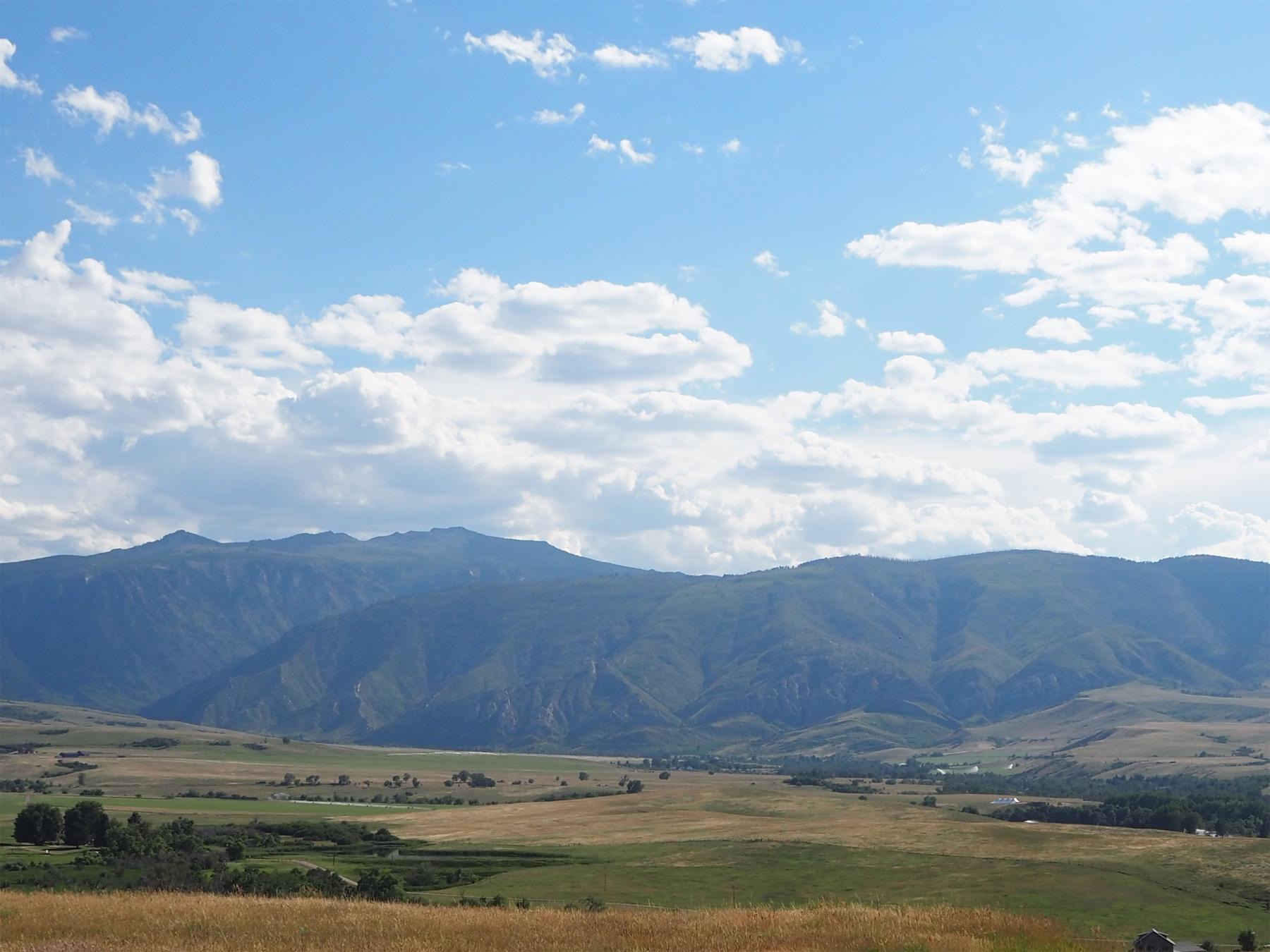
Helping students
She loved teaching, helping and encouraging young students, especially women. One of her students wrote, “I shall always remember you as the dear little lady with the big pen that is always willing to help someone.” Furthering education, said her son Victor in a 2000 interview with Sheridan-based historian Mary Ellen McWilliams, “was her lifelong passion.”
Living a century
Life’s simpler—and practical—joys gave her pleasure. At her 100th birthday celebration, her great-grandchildren asked her what was the most significant invention or event in her lifetime. Everyone guessed she would mention the men who walked on the moon. Instead, she said, “The match. If there was anything you hated to do in a wagon or buggy or horseback, it was to come home to no fire or hot stove. You would then have to ride to the neighbors and get hot coals to bring back in a brass bucket. But the match changed the need to do that!”
Vie Willits, age 100, died on Feb. 21, 1985. Although, as she aged, she attended church less often, Vie remained devoted to the Christian faith. She had helped organize the local branch of Woman’s Christian Temperance Union and remained a committed teetotaler. Vie did not wear pants. She rode in a regular saddle wearing a split skirt. Riding sidesaddle, she said, was too hard on the horse. As she aged and lost teeth, Vie rejected dentures as superfluous. She had similar thoughts about cataract surgery, said her grandson Roy Garber.
Her greatest attribute? Being comfortable in her own skin. Vie loved Wyoming history and botany yet made no pretense about living in a scholastic bubble. She created a new template, allowing western women with intellectual ambition to forge a path, balancing aspirations with domestic expectations.
[Editor’s note: Special thanks to the Wyoming Cultural Trust Fund, support from which helped make possible the publication of this article.]
Resources
Primary Sources
- “Fort Laramie and Its Relations to Pioneer Wyoming” The Wyoming Student 10, no.7 (1908): 5.
- Garber Family Papers. Transcripts of personal interviews, and letters. Used with permission and thanks.
- Garber, Vie Willits. The Bozeman Trail. University of Wyoming thesis, 1911, University of Wyoming library, Laramie, Wyoming. The Vascular Plants of the Little Goose Water-shed. University of Wyoming thesis 1911. Hebard Collection, Chisum Reading Room, University of Wyoming, Laramie, Wyoming.
- Hebard, Grace R, File. Box 10, Folder 3, Box 36, Folder 7 and Box 47, Folder 19, American Heritage Center, University of Wyoming, Laramie, Wyoming.
- Nelson, Aven. “Contributions from the Rocky Mountain Herbarium. VII.” Botanical Gazette 42, no. 1 (1906): 48–54. JSTOR, accessed Oct. 26, 2023 at http://www.jstor.org/stable/2466298.
- Second Annual Entertainment, Given by the Preparatory Department of the University of Wyoming. Feb. 13, 1903. Garber family papers.
- “Vie Garber: She’s Accumulated 90 Years of Life.” The Sheridan Press, 1975. Exact date unknown.
- The Wyoming Student. Commencement Address. October 1908, 10. Garber family papers.
Secondary Sources
- Ewig, Rick, and Tamsen Hert. University of Wyoming. Mount Pleasant, South Carolina: Arcadia Press, 2012, 61.
Illustrations
- The 1901 black-and-white photo of the Little Goose Valley is from the U.S. Geological Survey, USGS number dnh00827, used with thanks and thanks also to Cliff White, of Cranmore, Alberta, and his blog site, Lens of Time Northwest.
- The color photo of the Little Goose Valley, from July 2022, is by the Big Horn, Wyoming, painter Joel Ostlind.
- The photo of Vie Willits Garber’s map of the Bozeman Trail is by the author.
- The rest of the photos are from the author’s collection, courtesy of the Garber family of Big Horn, Wyoming. Used with permission and thanks.

